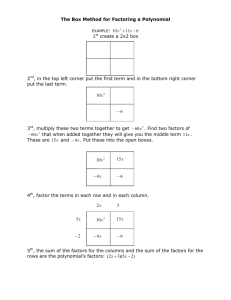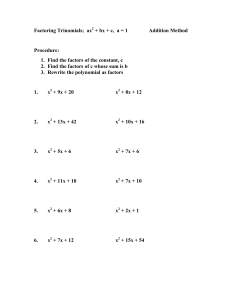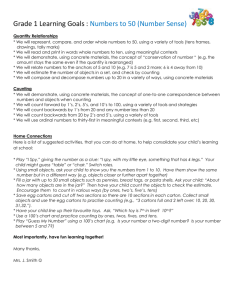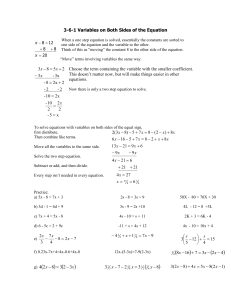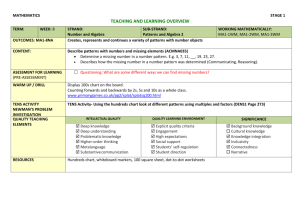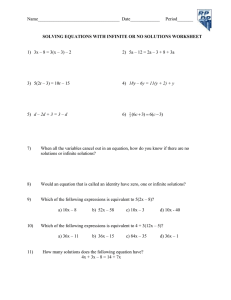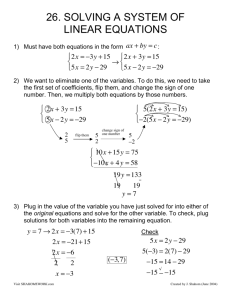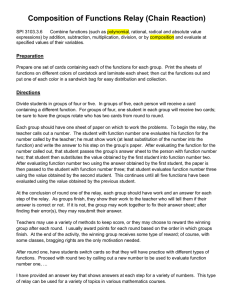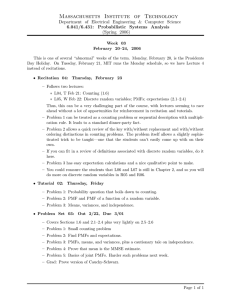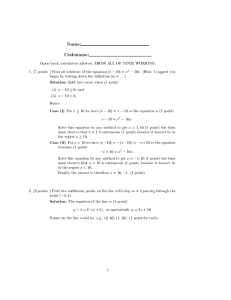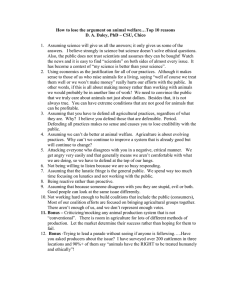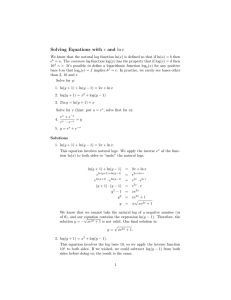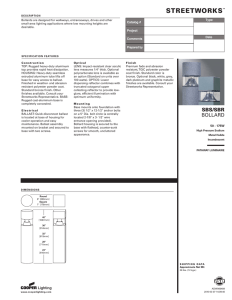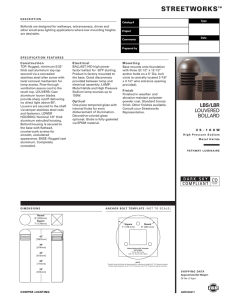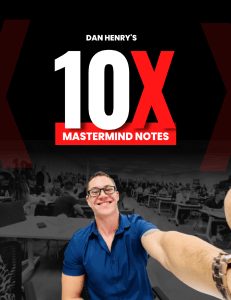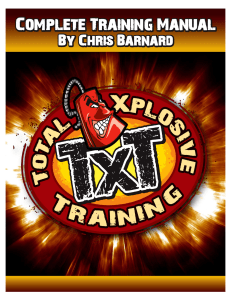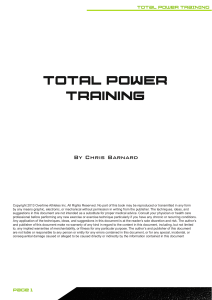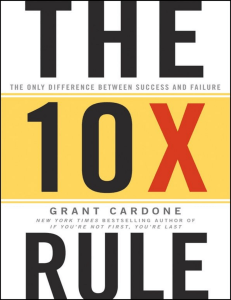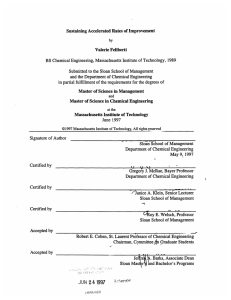NCTEM Host Schools Project
advertisement
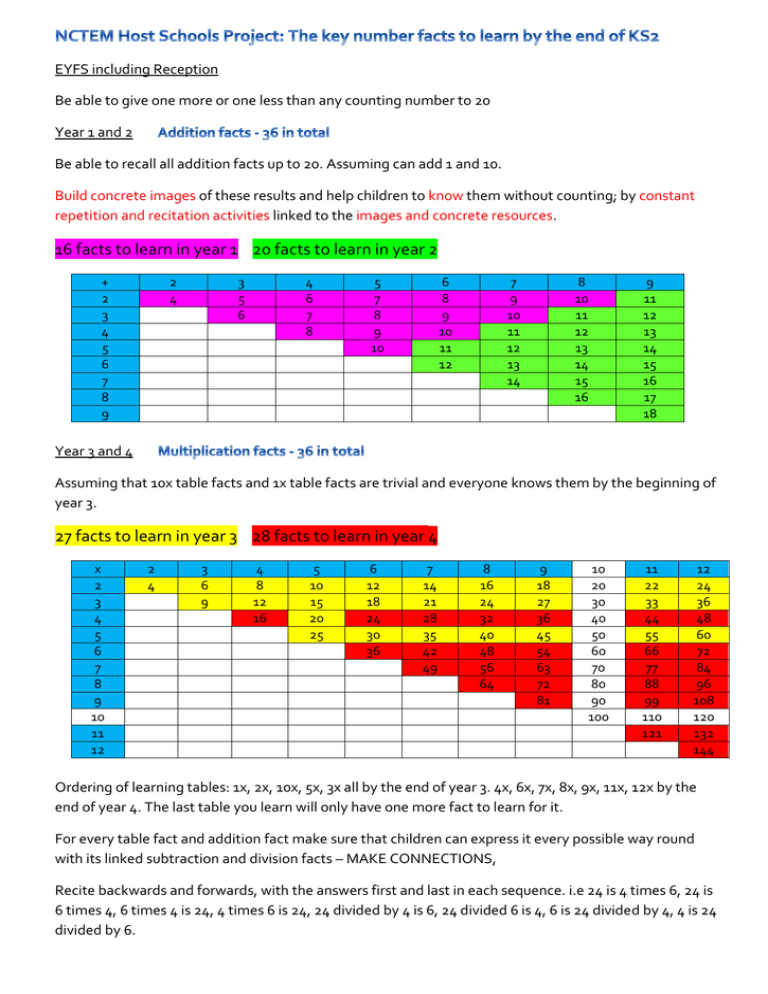
EYFS including Reception Be able to give one more or one less than any counting number to 20 Year 1 and 2 Be able to recall all addition facts up to 20. Assuming can add 1 and 10. Build concrete images of these results and help children to know them without counting; by constant repetition and recitation activities linked to the images and concrete resources. 16 facts to learn in year 1 20 facts to learn in year 2 + 2 3 4 5 6 7 8 9 2 4 3 5 6 4 6 7 8 5 7 8 9 10 6 8 9 10 11 12 7 9 10 11 12 13 14 8 10 11 12 13 14 15 16 9 11 12 13 14 15 16 17 18 Year 3 and 4 Assuming that 10x table facts and 1x table facts are trivial and everyone knows them by the beginning of year 3. 27 facts to learn in year 3 28 facts to learn in year 4 x 2 3 4 5 6 7 8 9 10 11 12 2 4 3 6 9 4 8 12 16 5 10 15 20 25 6 12 18 24 30 36 7 14 21 28 35 42 49 8 16 24 32 40 48 56 64 9 18 27 36 45 54 63 72 81 10 20 30 40 50 60 70 80 90 100 11 22 33 44 55 66 77 88 99 110 121 12 24 36 48 60 72 84 96 108 120 132 144 Ordering of learning tables: 1x, 2x, 10x, 5x, 3x all by the end of year 3. 4x, 6x, 7x, 8x, 9x, 11x, 12x by the end of year 4. The last table you learn will only have one more fact to learn for it. For every table fact and addition fact make sure that children can express it every possible way round with its linked subtraction and division facts – MAKE CONNECTIONS, Recite backwards and forwards, with the answers first and last in each sequence. i.e 24 is 4 times 6, 24 is 6 times 4, 6 times 4 is 24, 4 times 6 is 24, 24 divided by 4 is 6, 24 divided 6 is 4, 6 is 24 divided by 4, 4 is 24 divided by 6.
